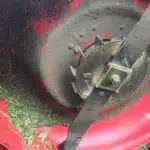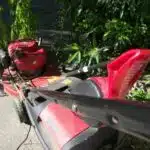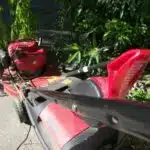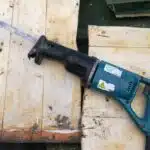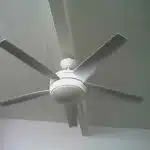A well-maintained lawn is an essential element of any home’s exterior. However, maintaining it can be a daunting task, especially when it comes to mowing. Fortunately, self-propelled lawn mowers have made the job much easier and efficient for homeowners. These machines are designed to move forward on their own without requiring manual pushing, making them a popular choice among homeowners with large lawns.
Using a self-propelled lawn mower may seem like a simple task, but there are several factors to consider to ensure that you achieve the best results possible. In this article, we will explore some useful tips and tricks to help you use your self-propelled lawn mower effectively. From adjusting the cutting height to maneuvering around obstacles in your yard, we will provide you with all the information you need to make mowing your lawn a breeze.
Getting To Know Your Self-Propelled Lawn Mower
Self-propelled lawn mowers are a popular choice for homeowners who want to maintain their lawns. Before operating your self-propelled lawn mower, it is essential to get familiar with the machine’s features and functions.
Storage tips are crucial in ensuring that your self-propelled lawn mower remains in optimal condition. It is advisable to store the machine in a dry and cool place, away from direct sunlight or rain. Additionally, it is necessary to remove any grass clippings or debris and clean the cutting deck thoroughly after every use.
Safety precautions must be taken when using a self-propelled lawn mower. Before starting the machine, ensure that the spark plug wire is disconnected, and the blade control lever is disengaged. Always wear protective gear such as gloves and safety glasses while operating the machine. Furthermore, keep children and pets away from the mowing area to avoid accidents.
As you prepare your lawn for mowing, it is necessary to inspect for any obstacles such as rocks or branches that may damage the blades. Additionally, ensure that there are no hidden cables or wires that may pose a risk of electrocution. By taking these steps, you can guarantee a safe and efficient mowing experience with your self-propelled lawn mower.
Preparing Your Lawn For Mowing
Your lawn is a reflection of your commitment to the environment and the beauty of your home. Lawn care is essential to maintain grass health, and preparing your lawn for mowing is an important step in achieving this goal. Before you start mowing, it’s essential to take the necessary steps to ensure that your lawn mower glides smoothly over the surface.
Firstly, it’s important to clear any debris from the lawn, such as rocks or branches. This will ensure that the blades on your mower aren’t damaged during use. Secondly, you should adjust the cutting height of your mower according to the season and weather conditions. Mowing at a higher level during times of drought can help protect grass roots from heat stress while keeping moisture locked in.
Lastly, before starting your self-propelled lawn mower, conduct a thorough inspection of its parts to ensure that they are functioning correctly. Inspect the air filter for dirt buildup and clean or replace it as necessary. Also, make sure that all bolts are tightened securely and that there are no leaks in any hoses or fuel lines.
By following these simple steps before starting your self-propelled lawn mower, you’ll be able to keep your grass healthy while achieving an immaculate-looking lawn. In our next section, we’ll discuss checking oil and fuel levels, which is crucial for maintaining optimal performance from your self-propelled lawn mower.
Checking Your Lawn Mower’s Oil And Fuel Levels
After preparing your lawn for mowing, it’s time to check your self-propelled lawn mower’s oil and fuel levels. This is an essential step in maintaining your machine’s performance and longevity. Checking these levels should be done before each use, ensuring that you won’t run out of gas or oil mid-mow.
When checking the oil level, make sure the engine has cooled down before removing the dipstick to avoid injury or damage to the machine. Wipe off any excess oil on the dipstick with a cloth and reinsert it into the engine. Pull it out again, and read the level indicated on the stick. If it’s below the recommended level, add more oil until you reach the desired level indicated in your owner’s manual.
Similarly, check your self-propelled lawn mower’s fuel levels regularly. It is recommended to fill up before each use or when necessary since running out of gas while mowing can cause damage to the engine. When filling up, make sure to use fresh gasoline and avoid using old or stale fuel that can clog up your machine’s carburetor.
Don’t panic if you encounter issues with your self-propelled lawn mower after checking its oil and fuel levels; some troubleshooting tips may help solve common problems such as difficulty starting or rough idling. These include cleaning spark plugs, adjusting choke settings and throttle controls, replacing air filters, among others. Regular maintenance checks will keep your self-propelled lawn mower running smoothly so that you can achieve an evenly cut lawn every time.
As you move forward with maintaining your self-propelled lawn mower by checking its oil and fuel levels regularly, you’ll want to adjust its cutting height as needed for optimal performance.
Adjusting The Cutting Height
As the saying goes, “a good lawn mower cuts the grass, not your time.” In order to achieve a well-manicured lawn, it is important to maintain the height of your grass. Adjusting the cutting height of your self-propelled lawn mower is a crucial task that requires attention to detail and proper technique.
To begin adjusting the blade height, first consult your owner’s manual for specific instructions on your particular model. Typically, there will be an adjustment lever or knob located near each wheel that can be raised or lowered to adjust the cutting height. It is important to adjust all wheels evenly in order to maintain an even cut across your entire lawn.
Maintaining a consistent cutting height is vital for overall lawn health. A general rule of thumb is to never remove more than one-third of the blade length at any given time. This will ensure that your grass remains healthy and strong throughout the mowing season. By regularly adjusting and maintaining the cutting height of your self-propelled lawn mower, you can achieve a beautiful and healthy lawn that will be the envy of your neighborhood.
With a thorough understanding of adjusting blade height, maintaining it becomes easier than ever before. Keeping track of routine maintenance schedules such as sharpening blades and oil changes ensures longevity and makes sure there are no sudden surprises when mowing next time around. Understanding different types of blades would also help in making informed choices about choosing from options available in case replacement needs arise eventually.
Understanding The Different Types Of Blades
After adjusting the cutting height, it’s important to understand the different types of blades available for your self-propelled lawn mower. There are two main types of blades: mulching and bagging. Mulching blades have a unique design that allows them to cut grass clippings into smaller pieces, which can then be left on the lawn as a natural fertilizer. Bagging blades, on the other hand, are designed to collect grass clippings in a bag attached to the back of the mower.
Another factor to consider when selecting a blade for your self-propelled lawn mower is whether you want a rotary or reel blade. Rotary blades have a spinning motion that cuts grass in a circular fashion, while reel blades use a scissor-like motion to cut grass with precision. The type of blade you choose will depend on your specific needs and preferences.
It’s important to regularly sharpen and replace your lawn mower blade as needed. A dull blade can damage your lawn and cause uneven cuts, which can lead to disease and pests. Additionally, if you notice that your blade is bent or damaged in any way, it’s important to replace it immediately.
When selecting the right blade for your lawn, consider both the type of blade and the height at which you’ll be cutting your grass. Different grass types require different cutting heights, so it’s important to adjust the height accordingly before mowing with your selected blade type. With these factors in mind, you’ll be able to choose the right blade for your self-propelled lawn mower and maintain healthy lawns all year round.
As you move forward with starting your self-propelled lawn mower, make sure that you’ve selected the appropriate cutting height and blade type based on grass type and desired outcome. By following these simple steps, you’ll have no trouble achieving beautiful results with ease!
Starting Your Self-Propelled Lawn Mower
To start your self-propelled lawn mower, there are a few steps you need to follow. First, ensure that the fuel tank is full and the oil levels are adequate. Then, engage the blade control lever and adjust the cutting height to your desired level. Once done, pull back on the starting cord slowly until you feel resistance and then give it a quick, firm pull to start the engine.
If you experience any starting issues, there could be multiple reasons behind it. Check if the spark plug is dirty or worn out as this can prevent ignition. Another probable cause could be clogged air filters or stale fuel which can significantly impact engine performance. Troubleshooting these issues will help in getting your self-propelled lawn mower up and running smoothly.
After starting your lawn mower successfully, familiarize yourself with adjusting speed settings based on the terrain you’re mowing on. Slow down when encountering steep slopes or thick grass to prevent damage to your machine or injury to yourself. By following these tips and keeping troubleshooting techniques handy for any unexpected issues, you’ll be well on your way to achieving a well-manicured lawn in no time.
As you master starting and adjusting settings of your self-propelled lawn mower, next comes maneuvering around obstacles such as trees or flower beds without damaging them or stalling your machine. Keep reading for tips on how to do so with ease!
Maneuvering Around Obstacles
After starting your self-propelled lawn mower, the next step is to maneuver around obstacles in your lawn. Did you know that according to a recent survey, 42% of lawn mower accidents happen due to hitting an object or obstacle? This highlights the importance of obstacle avoidance while mowing your lawn.
To navigate tight spaces, it is important to adjust your speed and direction accordingly. Slow down when approaching an obstacle and turn the wheels in the opposite direction to avoid hitting it. If you need to make a sharp turn, disengage the self-propulsion feature and carefully pivot on one wheel. Remember to always be aware of your surroundings and plan ahead before making any turns or maneuvers.
Here are some tips for obstacle avoidance and navigating tight spaces with your self-propelled lawn mower:
- Always wear protective gear such as gloves, goggles, and closed-toe shoes.
- Keep an eye out for rocks, sticks, toys, and other debris on your lawn.
- Use the highest cutting height setting possible to prevent scalping uneven terrain.
- If you have a large area with many obstacles or tight spaces, consider using a walk-behind instead of a self-propelled lawn mower.
Now that you know how to navigate around obstacles in your lawn, let’s move on to mowing in straight lines for a polished finish.
Mowing In Straight Lines
Mowing a lawn in straight lines can be a challenging task for many, but it is essential to maintain the overall look and health of your lawn. One of the critical factors in achieving a straight cut is alignment. The importance of alignment cannot be stressed enough as it helps you mow the lawn evenly without overlapping or leaving gaps.
To achieve proper alignment, begin by identifying a fixed object on the property line, such as a tree or fence post. Use this object as a reference point to guide your mower along the path. As you move forward, focus on keeping your eyes on the reference point and ensure that your mower’s path remains parallel to it. Maintaining this consistency will help you achieve an even cut throughout the entire lawn.
While mowing in straight lines, turning can often be tricky and result in uneven cuts or damage to the turf. To avoid this, make sure always to turn away from any obstacles such as trees, rocks, or flower beds. Take wider turns instead of sharp ones, and slow down before making any turns. These tips for turning will not only help you avoid damaging your lawn but also ensure that you maintain an even cut while mowing in straight lines.
Using proper posture and technique are crucial when operating a self-propelled lawn mower effectively. Keep reading to learn how to adopt these techniques and how they can improve your overall experience with using a self-propelled lawn mower.
Using Proper Posture And Technique
Transitioning smoothly from mowing in straight lines, it’s time to focus on maintaining proper posture and technique when using a self-propelled lawn mower. Just like the way a ballerina gracefully pirouettes across the stage, your movements while operating a lawn mower should be fluid and precise.
As an expert in lawn mowers, I cannot stress enough the importance of breathing properly while mowing. Inhale through your nose and exhale through your mouth to ensure that you are getting enough oxygen to sustain your body’s energy levels. Additionally, make sure that your hands are in the correct position on the handlebars. Your hands should be slightly wider than shoulder-width apart for maximum control.
Moving on to another important aspect of lawn mowing technique, avoiding overlapping and skipping can greatly improve the overall appearance of your yard. Overlapping occurs when you mow over previously cut grass, leaving uneven patches behind. Skipping happens when you miss spots altogether, leaving unsightly tufts of grass sticking up like sore thumbs. To avoid these issues altogether, try dividing your yard into sections and tackling each one systematically.
With proper breathing techniques and hand placement on the handlebars, as well as paying close attention to overlapping and skipping areas during mowing sessions, you’ll quickly become an expert at using a self-propelled lawn mower. Keep these tips in mind during every use to ensure that your yard always looks its best!
Avoiding Overlapping And Skipping
To achieve a well-manicured lawn, it is important to avoid overlapping and skipping sections while mowing. Overlapping occurs when the mower passes over an area that has already been cut, resulting in double cutting and creating undesirable stripes on the lawn. Skipping, on the other hand, leaves unmowed patches of grass that make the lawn look untidy.
To prevent overlapping and skipping, it is recommended to use a visual reference point while mowing. This could be a tree, a garden bed or any other object in the yard that can act as a guide for maintaining straight lines. Additionally, when turning at the end of each row, make sure to overlap slightly with the previously mowed section before turning to ensure complete coverage.
Proper mowing speed is also critical in preventing overlapping and skipping. Mowing too quickly can result in missed areas or uneven cuts due to lack of control. On the other hand, mowing too slowly can lead to excessive wear on the mower’s blades and decreased efficiency. A moderate pace should be maintained throughout the entire mowing process for best results.
- Use a visual reference point as a guide for maintaining straight lines
- Overlap slightly with previously mowed sections when turning at row ends
- Maintain a moderate pace throughout the entire mowing process
- Avoid excessive speed or slow mowing which can result in missed areas or uneven cuts
With these tips in mind, achieving a well-manicured lawn without overlapping or skipping sections is achievable. However, dealing with wet grass presents its own set of challenges and requires special attention to avoid damaging both your lawn and your equipment.
Dealing With Wet Grass
To avoid causing damage to your lawn, it is important to know how to properly deal with wet grass when using a self-propelled lawn mower. Wet grass can be slippery and heavy, causing the mower blades to become clogged and making it difficult to achieve an even cut. To prevent this, choose a day to mow when the grass is dry or wait until later in the day when the dew has evaporated.
If you must mow wet grass, there are some precautions you can take. First, adjust the height of your mower deck. A higher deck will allow more air circulation and reduce the chance of clogging. Second, make sure your blades are sharp. Dull blades will tear at the wet grass rather than cutting it cleanly, leading to uneven patches and potential disease in your lawn. Finally, mow at a slower pace than usual and make smaller passes to prevent clumping.
By taking these steps, you can help prevent damage to your lawn while still achieving a clean cut on wet grass. Remember that it is always better to err on the side of caution when dealing with weather conditions that may affect your mowing experience.
Transitioning into maintaining your lawn mower: Regular maintenance of your self-propelled lawn mower is crucial for its performance and longevity. By following some simple steps such as changing oil regularly, cleaning or replacing air filters, sharpening blades and checking tire pressure, you can keep your machine running smoothly for years to come.
Maintaining Your Lawn Mower
A self-propelled lawn mower is an investment that must be taken care of properly to ensure its longevity. Regular maintenance will not only extend the life of your machine but also improve its performance. In this section, we will discuss two crucial aspects of maintaining your lawn mower: sharpening blades and replacing air filters.
Sharpening blades is a vital task that should be performed at least once every mowing season. A dull blade can damage your grass blades, making them more susceptible to diseases and pests. To sharpen your blades, remove them from the lawn mower and use a file or grinder to sharpen the edges. Always wear gloves when handling sharp objects and ensure that you balance the blade before reinstalling it back onto your machine.
Replacing air filters is another critical aspect of maintaining your lawn mower. A dirty air filter can cause problems with starting the engine or cause it to stall while in use. Refer to the owner’s manual for specific instructions on how to replace the air filter on your particular model of lawn mower. Keeping up with regular maintenance tasks such as cleaning undercarriage, lubricating moving parts, and replacing spark plugs will ensure that your machine continues to perform at its best.
In conclusion, regular maintenance is key to keeping your self-propelled lawn mower running smoothly for many seasons to come. Sharpening blades and replacing air filters are just two essential tasks that should be performed regularly to keep your machine in top working condition. In the next section, we will discuss how to properly store your lawn mower when it is not in use.
Storing Your Lawn Mower
Maintaining your lawn mower is crucial to ensure it runs smoothly and efficiently. However, cleaning your self-propelled lawn mower is equally important. To keep your machine in top condition, consider these cleaning tips.
Firstly, ensure that the engine has cooled down before you begin cleaning. Then, use a hose or pressure washer to remove any debris or grass clippings from the underside of the deck. Next, use a soft-bristled brush to remove any remaining debris from the blade and surrounding areas. Finally, wipe down the entire mower with a dry cloth to prevent rusting.
In addition to regular maintenance and cleaning, it is essential to know how to store your self-propelled lawn mower correctly. During winter storage, make sure that you drain all fuel from the tank and run the engine until it stops running on its own. This step prevents fuel from clogging up your carburetor during storage. Additionally, storing your lawn mower in a cool and dry place will help prevent moisture buildup that can cause rusting.
Transitioning into troubleshooting common issues: While performing routine maintenance tasks can help prevent problems with your self-propelled lawn mower, sometimes issues do arise. In such cases, knowing how to troubleshoot common problems will save you time and money in repairs.
Troubleshooting Common Issues
Starter Problems with a self-propelled lawn mower typically stem from a lack of power or a broken starter cord. To diagnose the issue, it is necessary to check the spark plug connections and ensure the engine is receiving power.
Blade Issues with a self-propelled lawn mower can arise from a dull blade or a clogged air filter. To address these issues, it is necessary to sharpen the blade and clean the air filter.
Fuel Problems with a self-propelled lawn mower can be caused by an old or contaminated fuel mixture. To remedy this issue, it is necessary to replace the fuel mixture with a fresh one and check for any fuel leaks.
Starter Problems
As a lawn mower expert, I know that starter problems are common issues that often arise when using self-propelled lawn mowers. It’s frustrating to push and pull the cord and hear nothing but silence. However, this problem can be easily resolved with troubleshooting solutions and some basic maintenance tips.
Firstly, check the spark plug. Disconnect it from the engine and examine its condition. If it looks dirty or worn out, clean or replace it accordingly. Secondly, inspect the fuel filter for any clogs or blockages that may prevent the fuel from flowing properly. The filter should be replaced if necessary. Lastly, ensure that your mower has enough oil in its tank as low oil levels can cause starting problems.
Regular maintenance is key to preventing starter issues from happening in the first place. Clean your mower’s air filter regularly to avoid debris buildup which can affect its performance. Additionally, make sure to drain old fuel out of your mower before storing it since stale gasoline can cause starting problems.
In conclusion, starter problems are a common issue when using self-propelled lawn mowers, but they can be easily resolved with regular maintenance and simple troubleshooting solutions like checking the spark plug and fuel filter while ensuring proper oil levels in your mower’s tank. By following these tips, you’ll keep your lawn mower running smoothly for years to come!
Blade Issues
Another common issue that self-propelled lawn mower users encounter is blade problems. Over time, the blades of a lawn mower can become dull or damaged, causing poor mowing performance and uneven cuts. Sharpening blades is essential in maintaining an efficient and effective lawn mower. A sharp blade ensures that the grass is evenly cut, preventing it from being torn or injured.
If sharpening blades does not resolve the problem, replacing them may be necessary. Check for any visible damage such as cracks or bends on the blades before proceeding with replacement. Keep in mind that using a damaged blade can cause further issues to both your lawn and your mower’s performance. Replacing blades may seem costly at first, but it will save you more in the long run by improving your mower’s efficiency and preventing further damages.
To avoid blade problems, it is important to maintain your lawn mower regularly. Clean your mower after each use to prevent debris accumulation which can affect the blade’s performance. Additionally, inspect your blades for any signs of wear and tear at least once a year to ensure they are still in good condition. By doing so, you’ll prevent potential issues from arising and extend the life of your lawn mower’s blades.
In summary, maintaining sharp and undamaged blades is crucial in achieving an efficient mowing experience with a self-propelled lawn mower. If sharpening blades does not work, replacing them might be necessary. To avoid blade problems altogether, make sure to clean your mower after every use and inspect its condition regularly.
Fuel Problems
As a lawn mower expert, it is important to understand the various issues that self-propelled lawn mower users commonly encounter. One issue that can cause significant problems is fuel-related issues. Fuel problems can range from low-quality fuel to improper storage or even clogged fuel filters. Identifying and addressing these issues as soon as possible can prevent further damage to your lawn mower.
One way to check for fuel problems is by examining the spark plugs. Checking spark plugs regularly can prevent potential damages caused by using old, worn-out, or dirty plugs. Dirty or faulty spark plugs may cause the engine not to start or run poorly, making it difficult to use your self-propelled lawn mower efficiently. Additionally, cleaning air filters is another way of ensuring proper fuel delivery and preventing any blockages in the fuel system.
If you suspect that the problem lies within the fuel system of your self-propelled lawn mower, it’s best to consult an expert. They will be able to diagnose and fix any underlying issues with your machine’s fuel system efficiently and effectively. Regular maintenance such as changing oil and filter will also ensure that all components are functioning correctly.
In summary, maintaining an efficient self-propelled lawn mower requires regular maintenance of its fuel system. Checking spark plugs and cleaning air filters are essential steps in preventing any potential damages caused by low-quality fuels or clogged filters. Consistent maintenance will keep your machine working optimally and extend its lifespan.
Frequently Asked Questions
As a lawn mower expert, I have come across several questions related to the use of self-propelled lawn mowers. Here are some of the most frequently asked questions and their answers.
How do I start a self-propelled lawn mower?
Starting a self-propelled lawn mower is easy. First, ensure that the fuel tank is filled with gasoline and that there’s enough oil in the engine. Then, locate the primer bulb and press it several times to fill the carburetor with fuel. Next, engage the blade control lever and pull the starter cord firmly until you feel resistance. Finally, release the starter cord while holding onto the handlebar, and let it slowly retract back into its original position.
What are some pros and cons of using a self-propelled lawn mower?
The main advantage of using a self-propelled lawn mower is that it requires less effort to operate since it propels itself forward. This makes it ideal for people who have large lawns or those who don’t want to exert too much energy mowing their lawns. On the other hand, self-propelled mowers tend to be heavier than push mowers and may require more maintenance due to their additional components.
What are some safety tips when using a self-propelled lawn mower?
To ensure safe operation, always wear protective gear such as sturdy shoes or boots, eye protection, gloves, and earplugs. Keep children and pets away from the area being mowed at all times. Additionally, never attempt to remove grass clippings or make repairs while the engine is running. Always turn off the machine before performing any maintenance tasks.
Remember that proper usage of your self-propelled lawn mower will ensure efficient performance while also keeping you safe from potential accidents or injuries. By following these guidelines you can enjoy your beautiful yard without worry!
Conclusion
In conclusion, mastering the use of a self-propelled lawn mower is not only a practical skill but also an enjoyable one. With proper preparation and maintenance, your lawn mower can be a dependable tool that will help you achieve a beautifully manicured lawn. Remember to always check for oil and fuel levels before starting your machine, adjust cutting height according to your lawn’s needs, and keep the blades in good condition.
As a seasoned expert in the field of lawn care, I can confidently say that there is no better feeling than seeing the results of your hard work in the form of a lush green lawn. So go ahead and tackle those unruly patches with ease knowing that you have what it takes to operate your self-propelled lawn mower like a pro. The satisfaction of achieving that perfect cut is worth every effort put into maintaining your machine. So gear up and get mowing!
Image Credits
- “Praying Mantis – Lawn mower” by TeryKats (featured)


